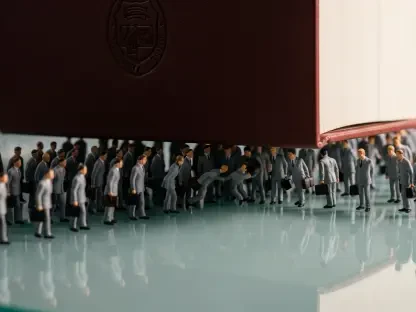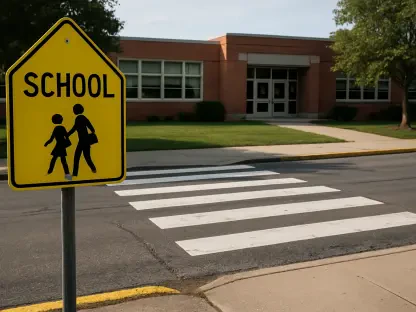As the new school year unfolds in Chicago, the city’s public school system finds itself at a critical juncture, wrestling with a host of complex issues that could redefine the educational experience for thousands of students. Chicago Public Schools (CPS) is confronting a challenging mix of enrollment declines spurred by federal immigration policies, a pressing budget deficit that demands tough financial decisions, and ongoing concerns about the adequacy of special education resources. These hurdles are compounded by uncertainties surrounding after-school programs and staffing adjustments, creating a landscape of uncertainty for educators, students, and families alike. Amid these difficulties, the district remains steadfast in its mission to prioritize classroom quality, yet the tangible impacts of external pressures and internal constraints continue to raise questions about how effectively this commitment can be upheld. This intricate web of challenges paints a vivid picture of a school system striving to balance competing demands while safeguarding the needs of its most vulnerable populations, setting the stage for a year of both struggle and resilience within the community.
Navigating Enrollment Declines Due to Immigration Policies
The impact of federal immigration enforcement under the current administration casts a long shadow over CPS, significantly disrupting student enrollment numbers. Many immigrant families, gripped by the pervasive fear of deportation and heightened activity from Immigration and Customs Enforcement (ICE), face agonizing decisions about whether to keep their children in school or prioritize safety by withdrawing them. This anxiety has been palpable in incidents like a false alarm at Hamline Elementary, where unfounded rumors of ICE agents attempting to access the school sent waves of panic through the community. Such events highlight the emotional toll these policies exact, as families grapple with uncertainty about their future in the city. Beyond the immediate fear, the broader implications for schools are evident in declining attendance figures, which in turn affect funding allocations and resource planning, placing additional strain on an already burdened system.
Compounding the issue are the economic hardships faced by many newly arrived immigrant families, which further hinder school participation. Eva Corona, a bilingual coordinator at a South Side elementary school, has observed firsthand the struggles these families endure, often lacking access to basic necessities like stable housing and school supplies. These material challenges create barriers to education, as children may miss classes due to unmet needs or familial instability. Schools are stepping up efforts to provide support, offering resources and outreach to create a sense of normalcy amid the turmoil, yet the scale of the problem often outstrips available assistance. The ripple effects of these enrollment declines are felt not only in empty classrooms but also in the cultural fabric of schools, where diversity and community strength are diminished by the absence of these students.
Confronting a Severe Budget Deficit
Financial constraints are among the most pressing challenges facing CPS, with a substantial budget deficit forcing district leaders to make difficult and often unpopular decisions. The proposed budget includes significant cuts that target support staff roles such as crossing guards, lunchroom workers, and custodians, which could alter daily operations in schools. Changes to cleaning schedules and the potential elimination of hot meals after school at certain locations have sparked concerns about how these reductions will impact the overall student experience. While the specifics of some cuts, particularly to central and network office positions, remain under wraps, the overarching message from CPS is clear: tough sacrifices are necessary to address the fiscal shortfall, even if they risk disrupting the smooth functioning of schools.
Despite these cutbacks, district officials are vocal about their determination to shield core educational experiences from the brunt of financial strain. Efforts to maintain teacher-to-student ratios and allocate funding for additional teachers and instructional coaches reflect a strategic focus on preserving classroom quality. However, skepticism lingers among parents and educators about whether these measures will suffice to offset the loss of essential support services that contribute to a well-rounded school environment. The balancing act between fiscal responsibility and educational integrity remains a contentious issue, as stakeholders question whether the cuts will disproportionately affect schools in under-resourced neighborhoods, where such services are often most critical for student success and safety.
Assessing Staffing Adjustments and Educational Impact
On a positive note, CPS has achieved a historically low teacher vacancy rate of less than 3%, a milestone that Chief Talent Officer Ben Felton emphasizes as a significant step forward, particularly for high-need neighborhoods. This reduction in vacancies is seen as a crucial effort to ensure equitable access to quality education for students who are often furthest from opportunity, addressing long-standing disparities in staffing across the district. By filling these positions, CPS aims to provide stability and consistency in classrooms, fostering an environment where learning can thrive despite external challenges. This achievement stands as a beacon of progress amid broader concerns, signaling a commitment to prioritizing direct educational support where it is most needed.
However, the gains in teacher staffing are tempered by reductions in other critical areas, notably support staff and programs like tutoring that were previously expanded with federal COVID-19 relief funds. The trimming of these resources raises alarms about the broader support system that surrounds students, which is vital for addressing diverse learning needs and extracurricular development. Parents and educators worry that without adequate support staff, teachers may be stretched thin, unable to provide the individualized attention some students require. Additionally, the loss of tutoring programs could hinder academic recovery for those still grappling with learning gaps, underscoring the complex interplay between staffing levels and overall educational quality within the district.
Addressing Concerns in Special Education Services
Special education remains a focal point of contention within CPS, as parents and teachers express deep unease over recent layoffs of classroom assistants and a decrease in automatically assigned aides for students with moderate to severe disabilities. These changes have ignited fears that already limited resources for special needs students are being further eroded, potentially compromising their ability to thrive in an inclusive educational setting. Stakeholders like parent Melina Pereyra articulate a widespread concern that such reductions undermine the foundational support these students rely on, raising questions about the district’s priorities in meeting legal and ethical obligations to provide equitable education for all.
In response, Joshua Long, head of the Office for Students with Disabilities, maintains that these adjustments are not driven by budget constraints but rather by a strategic effort to avoid overstaffing and ensure resources are allocated efficiently. However, this explanation has met with skepticism from many in the community, who argue that the practical impact of fewer aides directly translates to diminished support in classrooms. The debate highlights a broader tension between administrative justifications and the lived experiences of families, as trust in the district’s ability to safeguard special education services hangs in a delicate balance. As this issue unfolds, the need for transparent communication and tangible solutions becomes increasingly apparent to address the valid concerns of those most affected.
Grappling with After-School Program Uncertainties
After-school programs, long a vital resource for CPS students, are now shrouded in uncertainty as funding cuts and inconsistent support threaten their sustainability. Last year, the district reduced funding for these initiatives by roughly one-third, and with the current budget proposal still in flux, further reductions remain a distinct possibility. These programs often serve as a lifeline for working families, providing safe spaces for children to engage in enrichment activities and receive additional academic support. The potential loss of such opportunities could have far-reaching consequences, particularly for students in underserved communities who rely on these programs to bridge gaps in learning and social development.
Adding to the challenge is the disorganized state of federal and state funding for after-school initiatives, plagued by technical errors and unallocated funds that exacerbate the difficulty of sustaining these critical services. This lack of reliable external support places additional pressure on CPS to find internal solutions, even as financial resources dwindle. The uncertainty surrounding these programs not only affects students but also impacts families who must scramble for alternative arrangements, often at significant personal cost. As the district navigates this precarious situation, the broader implications for student well-being and academic success loom large, underscoring the urgent need for a coordinated approach to secure the future of after-school offerings.
Striking a Balance Amidst Multiple Pressures
The overarching struggle for CPS lies in reconciling the commitment to high-quality education with the harsh realities of fiscal constraints and external pressures. District officials repeatedly emphasize their focus on preserving classroom experiences, as evidenced by stable teacher ratios and historically low vacancy rates, particularly in underserved areas. These efforts reflect a deliberate strategy to prioritize direct instructional support, aiming to mitigate the impact of broader cuts on student learning. Yet, the persistent worry among parents, teachers, and community leaders centers on whether these measures can adequately protect vulnerable populations, including immigrant families and students with disabilities, who often bear the heaviest burden of systemic challenges.
This tension is further complicated by external factors such as federal immigration policies and potential funding freezes tied to civil rights investigations, which introduce additional layers of uncertainty into CPS planning. Community advocates, alongside school administrators, recognize that the stakes are high, as budget cuts and policy impacts could deepen existing inequities within the system. The collective concern is that without targeted interventions and robust support mechanisms, the district risks failing those who most need a strong educational foundation. As CPS moves forward, the challenge will be to navigate these multifaceted pressures with a clear vision for equity, ensuring that every student has the opportunity to succeed despite the obstacles in their path.









